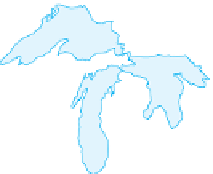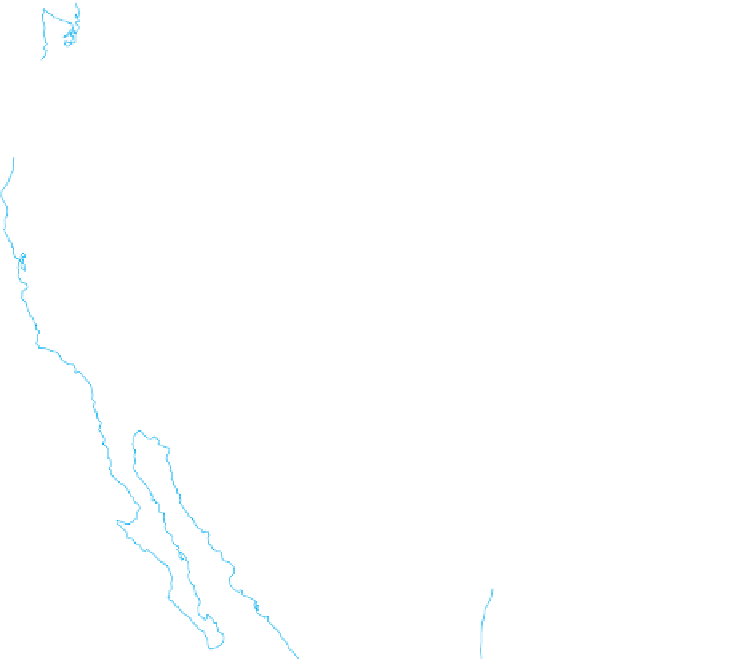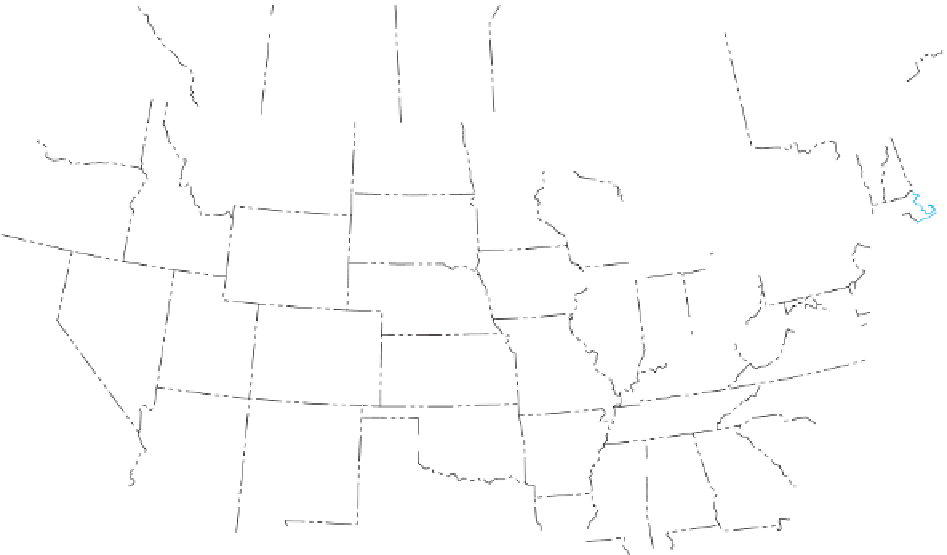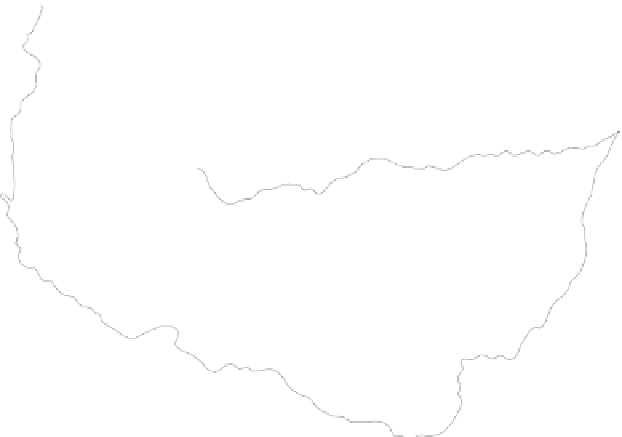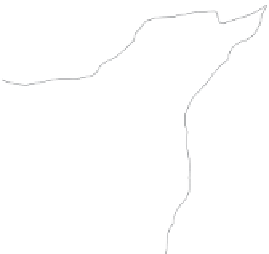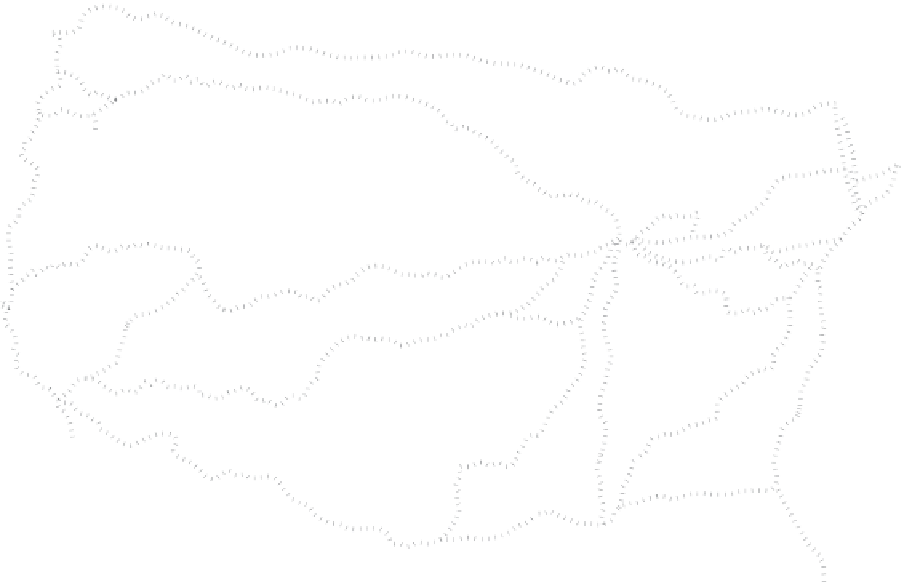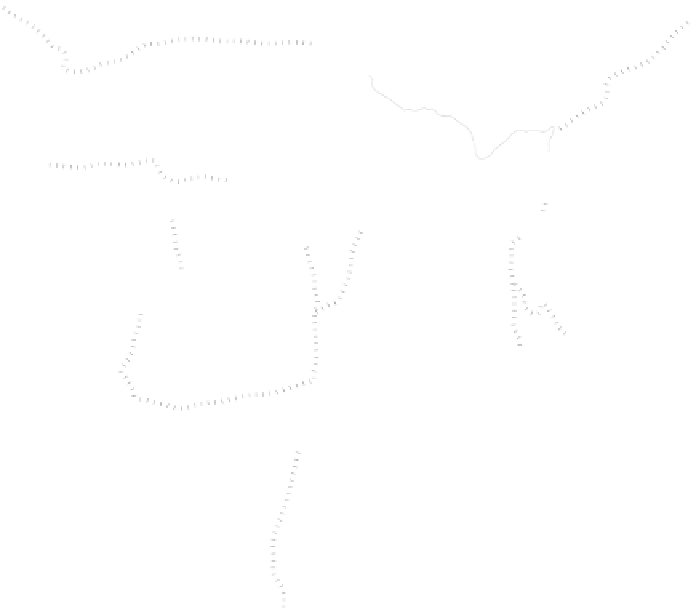Geography Reference
In-Depth Information
D
A
A
ND
SD
NE
T
Kansas City
KS
OK
Tulsa
Oklahoma City
Dallas
Ft. Worth
S
OUTHW
ESTER
N
TX
MAJOR INDUSTRIAL
REGIONS OF NORTH AMERICA
Sun Belt
Rust Belt
Named industrial regions
Railroads
Houston
SOUTHWESTERN
O
0
200
400
600
800
1000 Kilometers
0
200
400
600 Miles
Longitude West of Greenwich
Figure 12.17
Major Manufacturing Regions of North America.
North American manufacturing has dispersed to the Sun Belt, and deindus-
trialization has taken hold in much of the American Manufacturing Belt, now known as the Rust Belt.
© E.H. Fouberg, A.B. Murphy, H.J.
de Blij, and John Wiley & Sons, Inc.
New Patterns of Economic Activity
With the striking growth of the service sector and infor-
mation technologies, new factors have come into play
that are affecting patterns of economic activity. Most ser-
vice industries are not tied to raw materials and do not
need large amounts of energy. Hence, those factors of
production are markedly less important for service indus-
tries than for traditional manufacturing concerns. Market
accessibility is more relevant for the service sector, but
advances in telecommunications have rendered even that
factor less important for some types of service industries.
To understand the infl uences that shape the location of
services, it is useful to go back to our distinction among
tertiary, quaternary, and quinary industries. Tertiary services
related to transportation and communication are closely
tied to population patterns and to the location of primary
and secondary industries. As the basic facilitators of interac-
tion, they are strongly linked to the basic geography of
production and consumption. Other tertiary services—
restaurants, hotels, and retail establishments—are infl u-
enced mainly by market considerations. If they are located
far from their consumers, they are unlikely to succeed.
Employing technologies such as Geographic
Information Systems (GIS) (see Chapter 1), geographers
can model the best locations for new businesses, offi ce
complexes, government centers, or transportation connec-
tions. Major retailers not only shape the landscapes of the
places where they choose to put stores, but they also change
the economic prospects and physical landscapes of the
places where their headquarters are located. Wal-Mart's
headquarters in Bentonville, Arkansas, provides a particu-
larly striking example. If producers of consumer products
want to sell their goods in Wal-Mart stores, they must
travel to Bentonville, Arkansas, to negotiate deals with
Wal-Mart. In order to provide low prices to consumers,
Wal-Mart negotiates very low prices with major producers.
To create lower-priced products, companies have moved
production abroad, and to create good relationships with
the world's number one retailer (with sales of $405 billion
in fi scal year 2010), a variety of companies have moved into









































